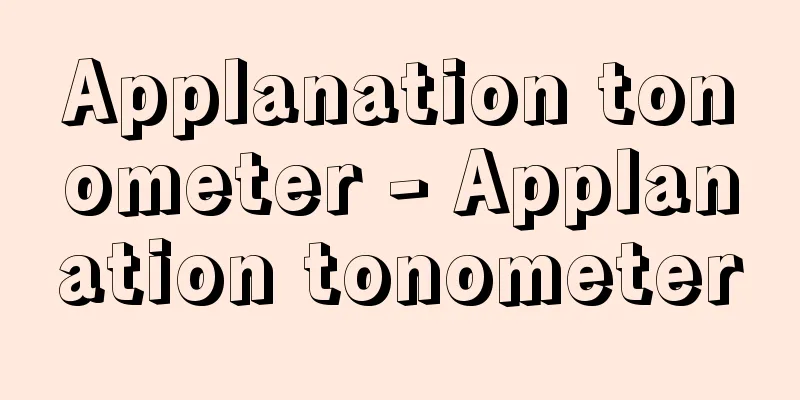Uraga Channel

|
A channel in the mouth of Tokyo Bay in the southern part of the Kanto region. It is between the Boso and Miura peninsulas, and refers to the sea south of the line connecting Cape Futtsu and Cape Kannon. It is about 10 kilometers wide from east to west. It was formed by a collapse in the Tertiary period of geological time, and the water is deeper on the Miura peninsula side. During the Edo period, the defense and distribution functions of this channel increased significantly as Edo played an important role throughout Japan. It became bustling with the traffic of cargo ships and other ships between Kamigata and other regions. At the end of the Edo period, when reports of foreign ships appearing near Japan began to spread, the shogunate made the coasts of both the eastern and western peninsulas the territories of fudai daimyo and built artillery batteries in dozens of places as a defense line for Edo, some of which still remain today. Currently, it is a major domestic and international shipping route leading to the Keihin and Keiyo industrial zones, and many large domestic and foreign ships constantly sail through it. In addition, ferries between the Boso and Miura peninsulas create a traffic rush at sea, and the area is a frequent site of marine accidents. In summer, the coasts of both the Miura and Boso peninsulas are bustling with people as swimming beaches. Fishing can also be enjoyed all year round, and the area is often used as a recreational area for the Keihin area. [Yukio Asaka] Source: Shogakukan Encyclopedia Nipponica About Encyclopedia Nipponica Information | Legend |
|
関東地方の南部、東京湾口部の水道。房総、三浦両半島の間にあたり、富津岬(ふっつみさき)と観音崎を連ねる線以南の海をいう。東西の幅約10キロメートル。地質時代の第三紀に陥没して水道となったもので、水深は三浦半島寄りが深い。江戸時代に入ってから、江戸の日本全国に果たす役割の重要性に伴い、この水道の防衛、流通上の機能は著しく増大した。そして上方(かみがた)をはじめ諸地方との間の廻船(かいせん)や荷船の往来でにぎわうようになった。幕末になり日本近海に外国艦船の出没の報が伝わるようになると、幕府は東西両半島の沿岸を譜代(ふだい)大名領とし、数十か所に砲台を築いて江戸の防衛線としたが、それらのいくつかはいまも残されている。 現在は、京浜、京葉両工業地帯へ通ずる国内間、国際間の幹線航路であり、多数の内外の大型船舶の航行がしきりである。それに房総、三浦両半島間のフェリーボートが加わって、海上の交通ラッシュがおこり、海難事故多発海面となっている。沿岸は、三浦、房総両半島とも夏は海水浴場としてにぎわう。また、一年中釣りが楽しめ、京浜のレクリエーション地域としてよく利用される。 [浅香幸雄] 出典 小学館 日本大百科全書(ニッポニカ)日本大百科全書(ニッポニカ)について 情報 | 凡例 |
Recommend
Tent - tent (English spelling)
Nowadays, the word tent is generally thought to r...
Rewrite Kyogen
A technique in the creation of Kabuki scripts. It...
Giant eel (English name: Anguilla marmorata)
A fish of the order Anguilliformes and family Angu...
Curie, E.
…In October 1891, she went to Paris to complete h...
Edo person - Edo
〘 noun 〙 A person born in Edo. A person from Edo. ...
"Utsunomiya Family Koan Shikijo" - Utsunomiya Family Koan Shikijo
…The family law of the Utsunomiya clan, a powerfu...
Muphahlele
A South African black writer. Born in the slums of...
Conger eel - Conger eel (English spelling)
A general term for marine fish belonging to the fa...
Tan-Bogoraz (English spelling)
…Soviet ethnologist and linguist. Also known as T...
Lubrication in plastic working
Reducing the frictional force at the friction poin...
Pudu - Pudu (English spelling)
A mammal of the Cervidae family in the even-toed o...
Comb making - Comb making
Craftsmen who make combs. Two comb-makers are seen...
Haircut - Chihatsu
〘Noun〙 ("Nagi" means to shave) To cut th...
Settlement name - Settlement name
... Humanistic place names are place names that a...
Peach neighbor - Tourin
1649‐1719 (Keian 2‐Kyoho 4) A haiku poet of the ea...









